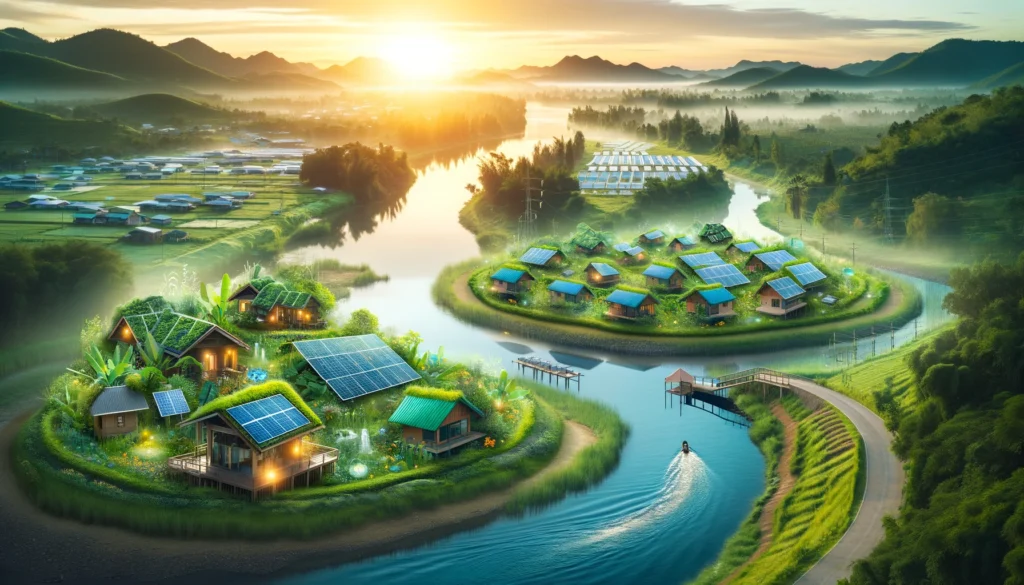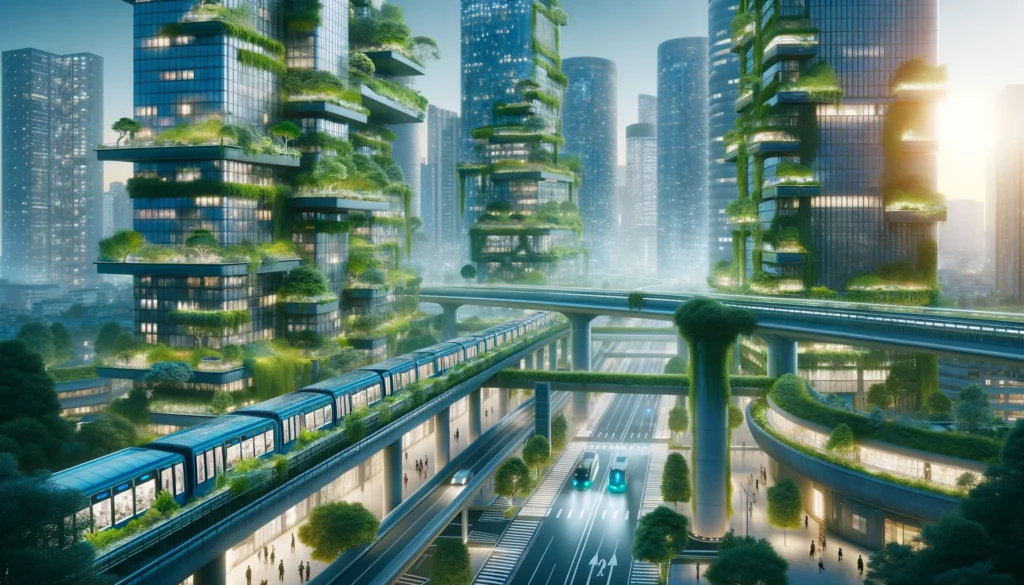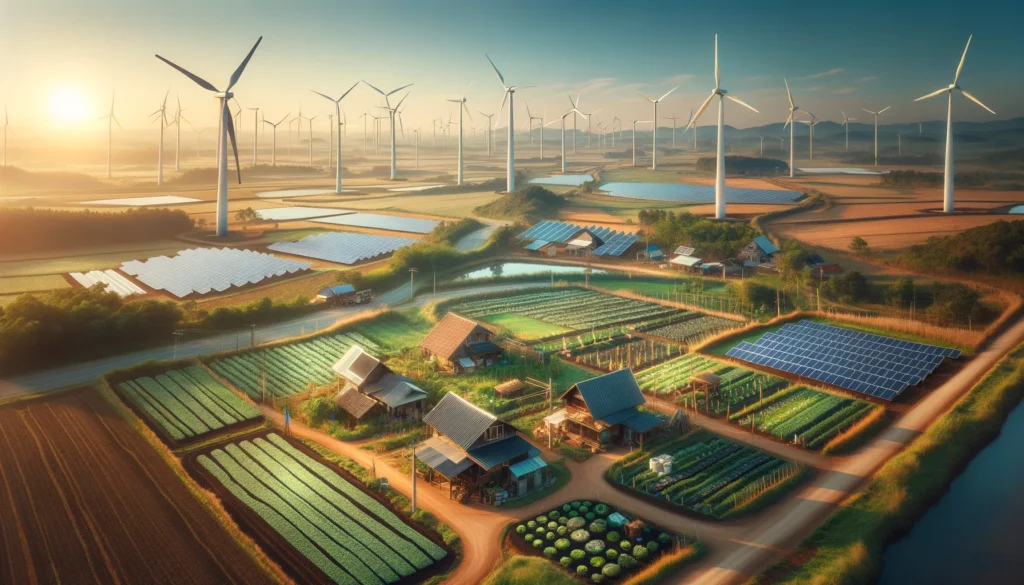In an era where climate change and environmental sustainability are at the forefront of global concerns, the imperative for renewable energy solutions has never been greater. Across the world, communities are increasingly turning towards sustainable energy alternatives to mitigate carbon emissions and reduce their environmental footprint. One such solution gaining traction is the implementation of “The Green Grid” – a comprehensive framework aimed at transforming communities through sustainable energy practices. In this article, we explore the concept of The Green Grid and its potential to revolutionize the way we power our communities.
Table of Contents

Understanding The Green Grid
The Green Grid represents a holistic approach to energy management, emphasizing the integration of renewable energy sources, energy-efficient technologies, and smart grid systems. At its core, The Green Grid seeks to create a sustainable energy ecosystem that balances environmental stewardship with economic viability. By leveraging advancements in renewable energy generation, energy storage, and grid optimization, The Green Grid aims to reduce reliance on fossil fuels and pave the way for a cleaner, greener future.
Key Components of The Green Grid
Renewable Energy Generation:
Central to The Green Grid is the adoption of renewable energy sources such as solar, wind, hydroelectric, and geothermal power. These clean energy sources offer abundant and inexhaustible alternatives to traditional fossil fuels, helping to mitigate greenhouse gas emissions and combat climate change. By investing in renewable energy infrastructure, communities can reduce their carbon footprint while enhancing energy security and resilience.
Energy Storage Solutions:
In conjunction with renewable energy generation, The Green Grid emphasizes the importance of energy storage technologies such as batteries, pumped hydro storage, and thermal energy storage. These storage solutions play a crucial role in balancing supply and demand, enabling the efficient utilization of intermittent renewable resources. By storing excess energy during periods of low demand and releasing it when needed, energy storage systems help optimize grid performance and ensure a reliable supply of clean power.
Energy Efficiency Measures:
Another key aspect of The Green Grid is the implementation of energy efficiency measures aimed at reducing energy consumption and wastage. From energy-efficient buildings and appliances to smart meters and demand response programs, there are numerous strategies available to improve energy efficiency at the community level. By promoting energy conservation and efficiency, The Green Grid not only reduces environmental impact but also lowers energy costs for consumers and businesses.

Smart Grid Technologies:
At the heart of The Green Grid is the integration of smart grid technologies that enable real-time monitoring, control, and optimization of energy distribution. Smart grid systems leverage advanced sensors, communications networks, and analytics to optimize grid operations, enhance reliability, and accommodate distributed energy resources. By modernizing grid infrastructure and enabling two-way communication between utilities and consumers, smart grids facilitate the seamless integration of renewable energy sources and support the transition to a more sustainable energy future.
Benefits of The Green Grid
The adoption of The Green Grid offers a multitude of benefits for communities, ranging from environmental and economic advantages to enhanced energy security and resilience. Some of the key benefits include:
- Reduced Carbon Emissions: By transitioning to renewable energy sources and implementing energy efficiency measures, communities can significantly reduce their carbon footprint and mitigate the impacts of climate change.
- Lower Energy Costs: Renewable energy resources such as solar and wind power offer long-term cost savings compared to fossil fuels, while energy efficiency measures help lower energy bills for consumers and businesses.
- Enhanced Energy Security: Diversifying the energy mix with renewable sources and decentralized generation increases energy security by reducing reliance on imported fuels and centralized power plants.
- Job Creation and Economic Growth: The expansion of the renewable energy sector stimulates job creation and economic growth, providing opportunities for local employment and investment in clean energy infrastructure.
- Resilience to Disruptions: The decentralized nature of renewable energy generation and distributed storage enhances grid resilience, making communities more resilient to natural disasters and other disruptions.
Challenges and Opportunities
While The Green Grid holds great promise for transforming communities with sustainable energy solutions, it also faces several challenges and opportunities. These include:
- Intermittency and Grid Integration: The intermittent nature of renewable energy sources presents challenges for grid stability and integration, requiring innovative solutions such as energy storage and grid optimization.
- Infrastructure Investment: The transition to The Green Grid requires significant upfront investment in renewable energy infrastructure and grid modernization, which may pose financial challenges for some communities.
- Policy and Regulatory Frameworks: The development of supportive policy and regulatory frameworks is essential to incentivize investment in renewable energy and energy efficiency initiatives and overcome barriers to adoption.
- Community Engagement and Education: Effective community engagement and education are critical to garnering support for The Green Grid and promoting awareness of its benefits among stakeholders.
- Technological Innovation: Continued advancements in renewable energy technologies, energy storage, and smart grid solutions present opportunities to further enhance the efficiency and effectiveness of The Green Grid.
Conclusion
In conclusion, The Green Grid represents a transformative approach to energy management that holds the potential to revolutionize communities with sustainable energy solutions. By embracing renewable energy sources, energy storage technologies, energy efficiency measures, and smart grid systems, communities can reduce their environmental footprint, enhance energy security, and foster economic prosperity. While challenges remain, the benefits of transitioning to The Green Grid are clear, offering a pathway towards a cleaner, greener, and more resilient future for generations to come.

FAQs
What is The Green Grid?
The Green Grid is a comprehensive framework aimed at transforming communities through sustainable energy practices. It emphasizes the integration of renewable energy sources, energy-efficient technologies, and smart grid systems to reduce reliance on fossil fuels and mitigate environmental impact.
What are the key components of The Green Grid?
The key components include renewable energy generation (such as solar, wind, hydroelectric, and geothermal power), energy storage solutions, energy efficiency measures, and smart grid technologies.
What are the benefits of adopting The Green Grid?
The adoption of The Green Grid offers benefits such as reduced carbon emissions, lower energy costs, enhanced energy security, job creation, and economic growth, as well as increased resilience to disruptions.
What are the challenges associated with implementing The Green Grid?
Challenges include intermittency and grid integration of renewable energy sources, infrastructure investment, policy and regulatory hurdles, community engagement, and technological innovation.
How can communities transition to The Green Grid?
Communities can transition to The Green Grid by investing in renewable energy infrastructure, implementing energy efficiency measures, modernizing grid infrastructure, fostering supportive policies, engaging stakeholders, and leveraging technological advancements.
You May Also Like
- HOW GREEN ENERGY IS REVOLUTIONIZING THE POWER GRID
- HYDROGEN FUEL CELLS: THE NEXT FRONTIER IN GREEN ENERGY
- RENEWABLE ENERGY AND GRID MODERNIZATION: A MATCH MADE IN HEAVEN
- THE IMPORTANCE OF RENEWABLE ENERGY IN FIGHTING CLIMATE CHANGE
- SUSTAINABILITY AND ENERGY: HOW INDIVIDUALS CAN CONTRIBUTE TO THE RENEWABLE REVOLUTION
